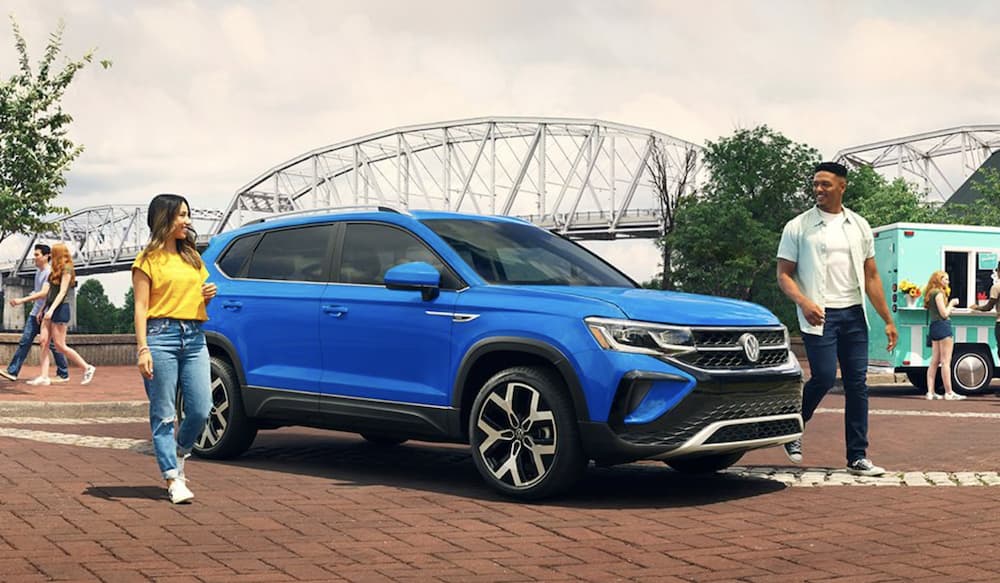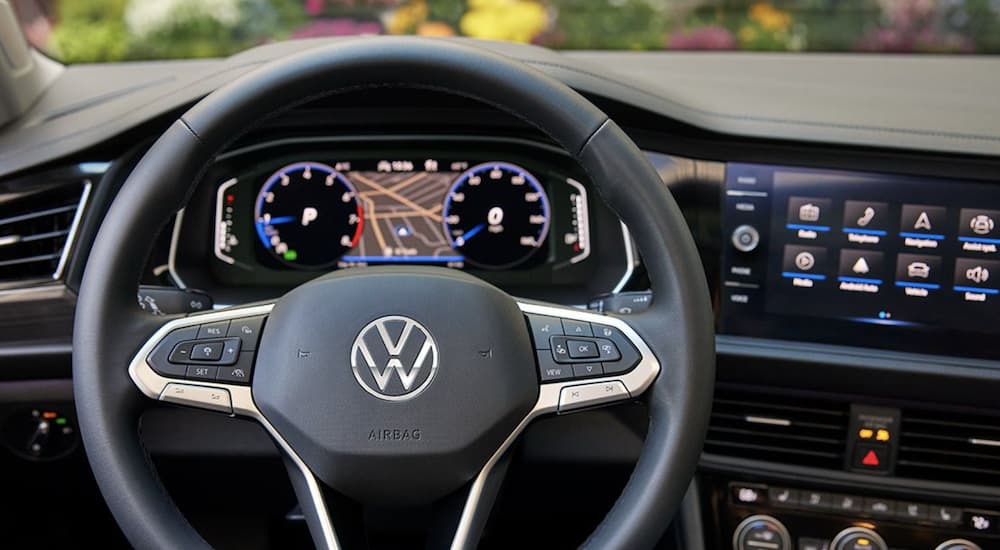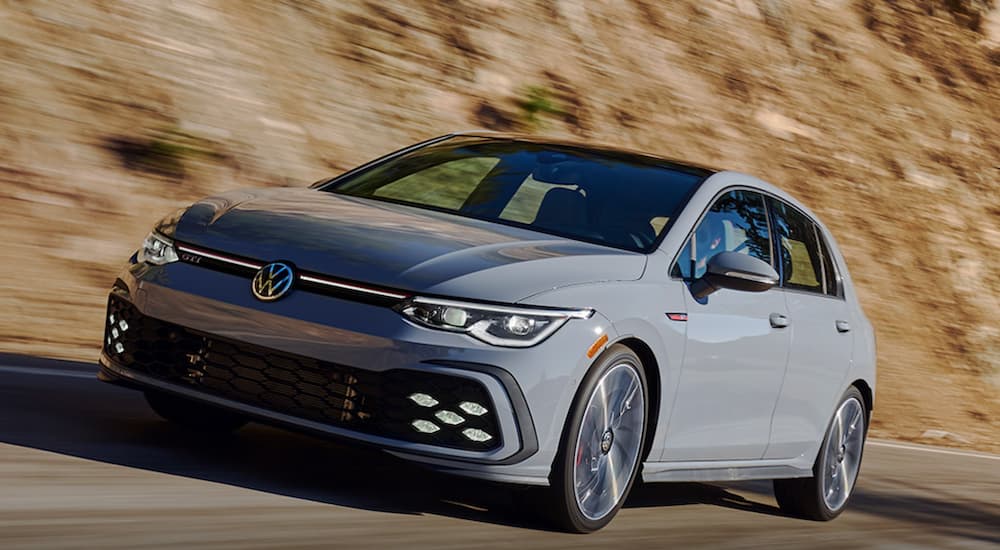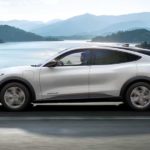In the not-too-distant past, self-driving cars felt like a pipe dream—something reserved for an unfathomable future. Today, the technology has taken off, and vehicle manufacturers are inching closer and closer to making autonomous vehicles a reality for consumers. Volkswagen stands out amongst others in its commitment to putting technology at the forefront. They even created an entire division dedicated to this feat: the Volkswagen Autonomy GmbH, or VWAT GmbH for short. These days, walking into a Volkswagen dealer and browsing the selection evokes the same awe of technology we all got when we walked into an Apple store for the first time in the early 2000s.
Volkswagen hasn’t produced a completely autonomous vehicle quite yet. However, their cars feature innovative technologies that are driving towards that horizon. Here’s what any VW fanatic—or anyone else interested in the future of automotive tech—needs to know.
The SAE Levels of Driving Automation
While self-driving vehicles have yet to come to fruition, the Society of Automotive Engineers is preparing for their arrival, creating a system by which to measure them. The SAE Levels of Driving Automation categorizes vehicles based on their dependency on human drivers. It can be split into two groups.
Levels 0, 1, and 2 encapsulate all of the vehicles available for purchase in the United States. They have driver support features aimed at enhancing safety, but the cars still require an operator that is steering, braking, and accelerating on some level. Levels 3, 4, and 5, on the other hand, consist of vehicles that can perform these functions without being prompted to by a driver. Here’s a breakdown:
Level 0
Vehicles that fall into Level 0 have your basic safety features, like automatic emergency braking or lane departure warning. They don’t take the place of an actual driver under any circumstances, but instead act as a safety net.
Level 1
Level 1 vehicles tack on features like adaptive cruise control and lane centering. They exist for the convenience of the driver, not just their safety. Vehicles in this category may or may not aggressively beep at you if you take your hands off the steering wheel or engage in other risky activities.
Level 2
Level 2 vehicles are very similar to Level 1—except for one subtle difference. Instead of carrying one of the aforementioned categories of features, it will have all of them.
Level 3
Level 3 marks a shift in self-driving capabilities. For Level 3 automobiles, the driver is not required to operate or drive the vehicle under normal circumstances. However, they may need to take over if prompted to by the system.
Level 4
Level 4 vehicles are fully autonomous when the right conditions are met. This may mean driving in a certain area or in specific weather conditions.
Level 5
Vehicles that meet Level 5 requirements are completely self-driving, no matter the conditions. No hands on the wheel are required.
Volkswagen’s IQ.Drive Technology
Volkswagen vehicles available for purchase in the United States fall into any of the first 3 tiers of the SAE Levels of Driving Automation—depending on model, trim, year, etc. Volkswagen’s slew of driver assistance technologies are referred to in the collective as IQ.Drive Suite. Its features include the following:
Lane Assist
If you’ve ever driven a vehicle that has some kind of lane assist technology sans lane centering, you’ve probably noticed that it’s a safety feature through and through, not meant for hands-free operation. Without lane centering, vehicles with lane assist tend to bob back and forth between the lines, like an achingly slow game of tennis. As Volkswagen’s Lane Assist is a safety feature and not a self-driving feature, it does require manual steering to keep the vehicle centered. Volkswagen’s Lane Assist works by using a camera mounted on the rearview mirror, which can recognize certain lane markings.
Adaptive Cruise Control
Adaptive Cruise Control is one of the most convenient driver assistance features available right now. It takes feet out of the equation, automatically adjusting the vehicle’s speed to adjust to nearby vehicles. That way, you don’t have to worry about crushing the brakes and having to reset your cruise control in the event someone moving at a slower speed changes lanes in front of you. Like other adaptive cruise control systems, Volkswagen’s uses radar to detect other vehicles, adjusting speed accordingly.
Emergency Assist
Emergency Assist makes you wonder, Why didn’t anyone think of this way, way sooner? It monitors steering wheel activity for driver safety. if the driver’s hands aren’t on the wheel for a certain amount of time, even after a series of alerts, the vehicle will come to a stop. It’s not the most exciting of features—and hopefully, it’s not even one that you’ll ever use—but in the event that it is needed, Emergency Assist can do some serious damage control.
Front Assist
Volkswagen’s Front Assist/Forward Collision Warning monitors traffic, scoping out potential impacts with vehicles, pedestrians, or any other large objects. When one is detected, the vehicle alerts the driver using visual and audio cues. If all else fails, Autonomous Emergency Braking kicks in to help reduce (or avoid) collisions.
Active Blind Spot Monitor
The infamous blind spot’s reign of terror is over. Thanks to Active Blind Spot Monitor, drivers will be more likely to avoid accidents when changing lanes. It activates when the turn signal is used, alerting the driver if there’s a vehicle they can’t see. It also counter-steers when needed.
Rear Traffic Alert
Backing up in busy parking lots may be one of the most anxiety-inducing things a driver can do, and that includes drifting and street racing. With Rear Traffic Alert, drivers can reverse as if they had eyes in the back of their head…and no headrest…and a transparent car. It alerts drivers to vehicles crossing behind them and will brake if necessary, too. Rear Traffic Alert may also help you do reverse donuts in an empty parking lot—not that I advise trying it.
Travel Assist
Travel Assist is the culmination of lane assist and adaptive cruise control. It doesn’t qualify as hands-free driving, but seems to be a stepping stone of sorts to that end. It requires certain conditions to be met, like markings on the roadway and the vehicle traveling above 20 mph.
Self-Driving Cars, Here We Come!
I, for one, can’t wait until autonomous cars are a reality. The safety to read a book or catch up on my favorite shows on the road? Yes, please. The ability to actually look around at the scenery on road trips? Sign me up. Not to mention: fewer accidents, more efficient traffic flows, and less stress caused by busy highway driving.
Volkswagen is doing their part to get us closer to this dream—and, what’s more, they’re taking a truly holistic approach to the future. Energy innovation and automation in their factories have progressed just as much as the tech driving the cars. For example, Volkswagen is exploring quantum computing and how it may apply to the automotive industry in beneficial ways, like more sophisticated traffic-routing systems.
They even have a solar panel park with landscaping maintained by sheep, who take grass in one end and out the other to keep the foundation for the solar panels healthy. Apparently, goats didn’t quite work out; they have a tendency to chew on the wires and jump on the merchandise. Soon, though, VW vehicles may be intelligent enough to outsmart them.






